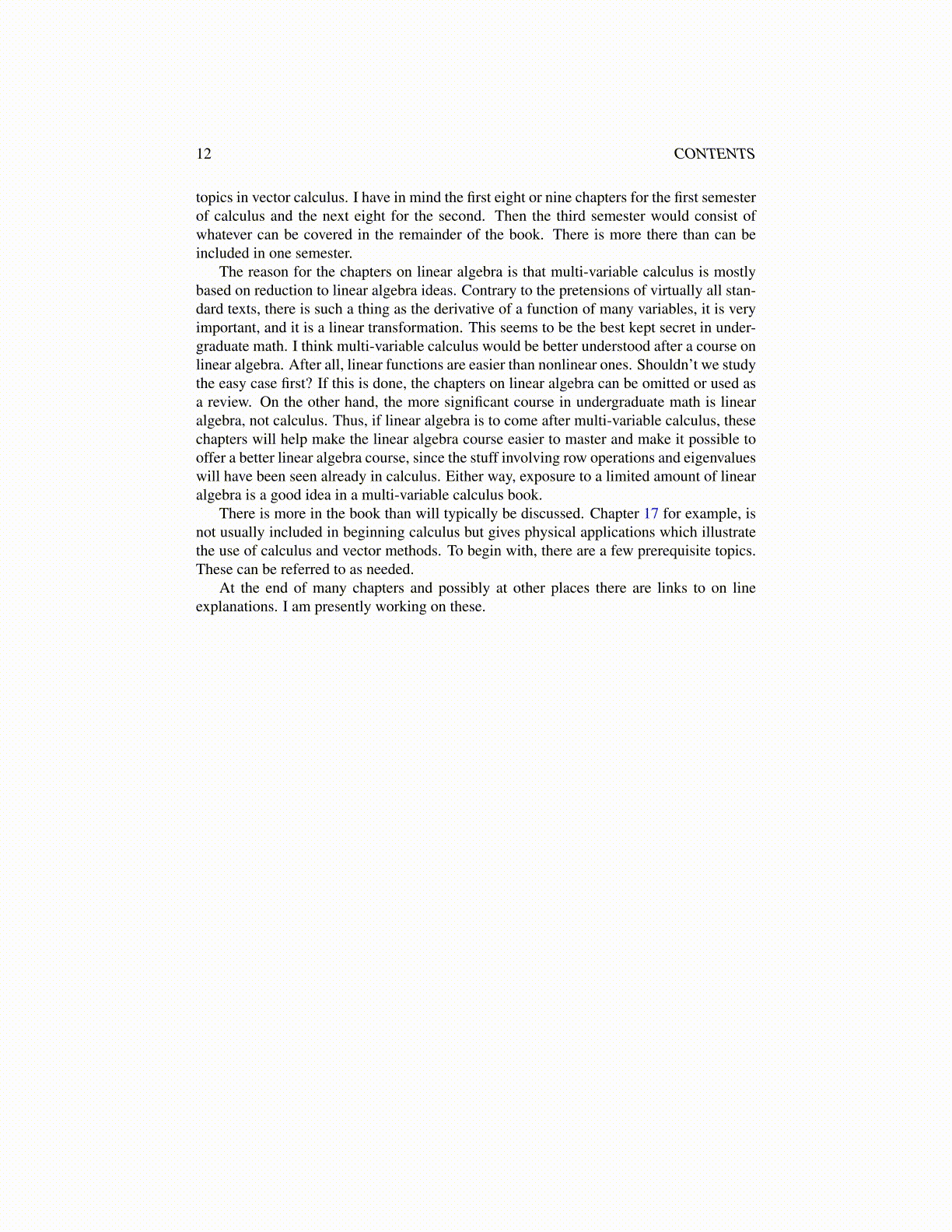
12 CONTENTS
topics in vector calculus. I have in mind the first eight or nine chapters for the first semesterof calculus and the next eight for the second. Then the third semester would consist ofwhatever can be covered in the remainder of the book. There is more there than can beincluded in one semester.
The reason for the chapters on linear algebra is that multi-variable calculus is mostlybased on reduction to linear algebra ideas. Contrary to the pretensions of virtually all stan-dard texts, there is such a thing as the derivative of a function of many variables, it is veryimportant, and it is a linear transformation. This seems to be the best kept secret in under-graduate math. I think multi-variable calculus would be better understood after a course onlinear algebra. After all, linear functions are easier than nonlinear ones. Shouldn’t we studythe easy case first? If this is done, the chapters on linear algebra can be omitted or used asa review. On the other hand, the more significant course in undergraduate math is linearalgebra, not calculus. Thus, if linear algebra is to come after multi-variable calculus, thesechapters will help make the linear algebra course easier to master and make it possible tooffer a better linear algebra course, since the stuff involving row operations and eigenvalueswill have been seen already in calculus. Either way, exposure to a limited amount of linearalgebra is a good idea in a multi-variable calculus book.
There is more in the book than will typically be discussed. Chapter 17 for example, isnot usually included in beginning calculus but gives physical applications which illustratethe use of calculus and vector methods. To begin with, there are a few prerequisite topics.These can be referred to as needed.
At the end of many chapters and possibly at other places there are links to on lineexplanations. I am presently working on these.